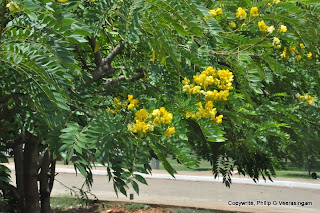 |
| Guard-stone at the entrance to the 'Alms Hall'. |
 |
| A stone 'rice bowl' which was filled with boiled rice and was used to feed around 3000 Buddhist monks in the 2nd Century BC. |
'Over much of the early history of
Buddhism in Sri Lanka, three subdivisions of Theravāda existed in Sri Lanka,
consisting of the monks of the Mahāvihāra, Abhayagiri Vihāra, and the Jetavana Vihāra.[2]Mahāvihāra
is the first tradition to be established, while Abhayagiri Vihāra and Jetavana
Vihāra is established by monks who separated from Mahāvihāra tradition.[2] According to A.K. Warder, the Indian Mahīśāsaka sect also established itself in Sri
Lanka alongside the Theravāda, into which they were later absorbed.[2] Northern regions of Sri Lanka also
seem to have been ceded to sects from India at certain times.[2]
According
to the Mahavamsa, the Mahavihara
was destroyed during sectarian conflicts with the Theravada monks of the Abhayagiri
Vihara during the 4th
century.[3] These Mahayana monks incited King Mahasena to destruct the Mahavihara. As a
result of this, a later king expelled the Mahayana monks from Sri Lanka[citation
needed].
The
traditional Theravadin account provided by the Mahavamsa stands in contrast to
the writings of the Chinese Buddhist monk Faxian (Ch. 法顯), who
journeyed to India and Sri Lanka in the early 5th century
(between 399 and 414 CE). He first entered Sri Lanka around 406 CE and began
writing about his experiences in detail. He recorded that the Mahavihara was
not only intact, but housed 3000 monks. He also provides an account of a
cremation at Mahavihara that he personally attended, of a highly respected śramaṇa who attained the arhatship.[4] Faxian also recorded the concurrent
existence of the Abhayagiri Vihara, and that this monastery housed 5000 monks.[5] In the 7th century CE, Xuanzang also describes the concurrent
existence of both monasteries in Sri Lanka. Xuanzang wrote of two major
divisions of Theravāda in Sri Lanka, referring to the Abhayagiri tradition as
the "Mahāyāna Sthaviras," and the Mahāvihāra tradition as the "Hīnayāna Sthaviras."[6] Xuanzang further writes:[7]
The Mahāvihāravāsins reject the
Mahāyāna and practice the Hīnayāna, while the Abhayagirivihāravāsins study both
Hīnayāna and Mahāyāna teachings and propagate the Tripiṭaka.'



























